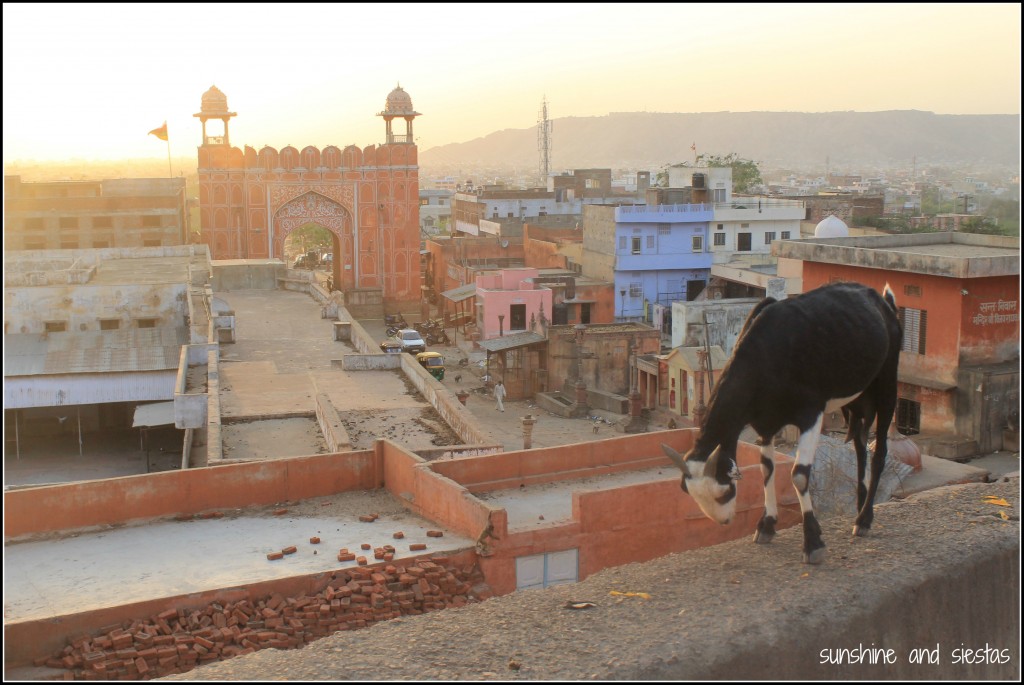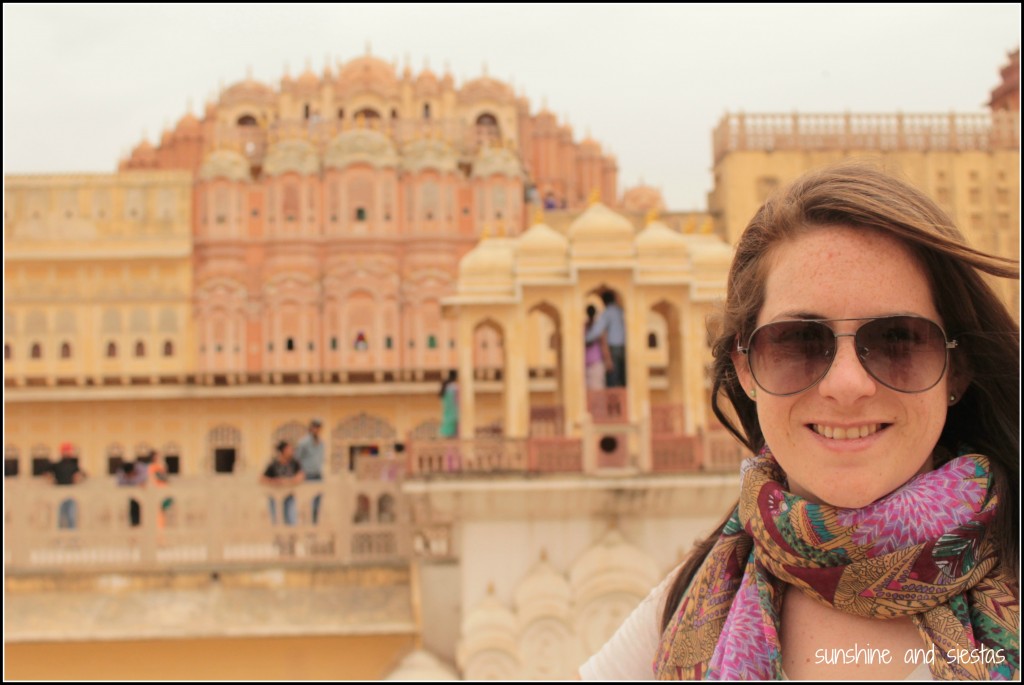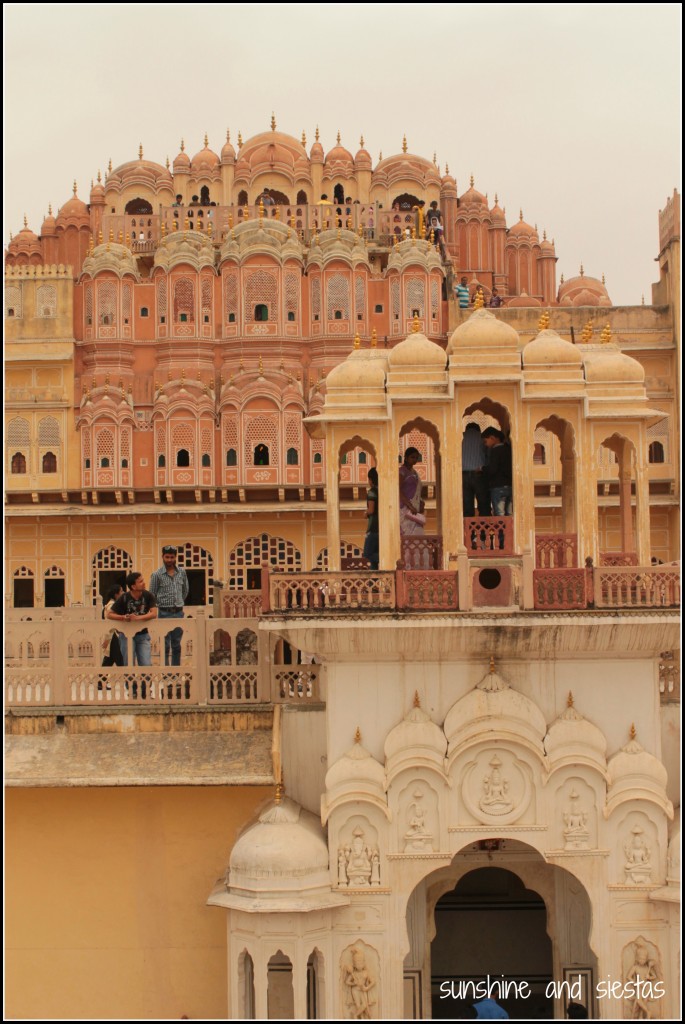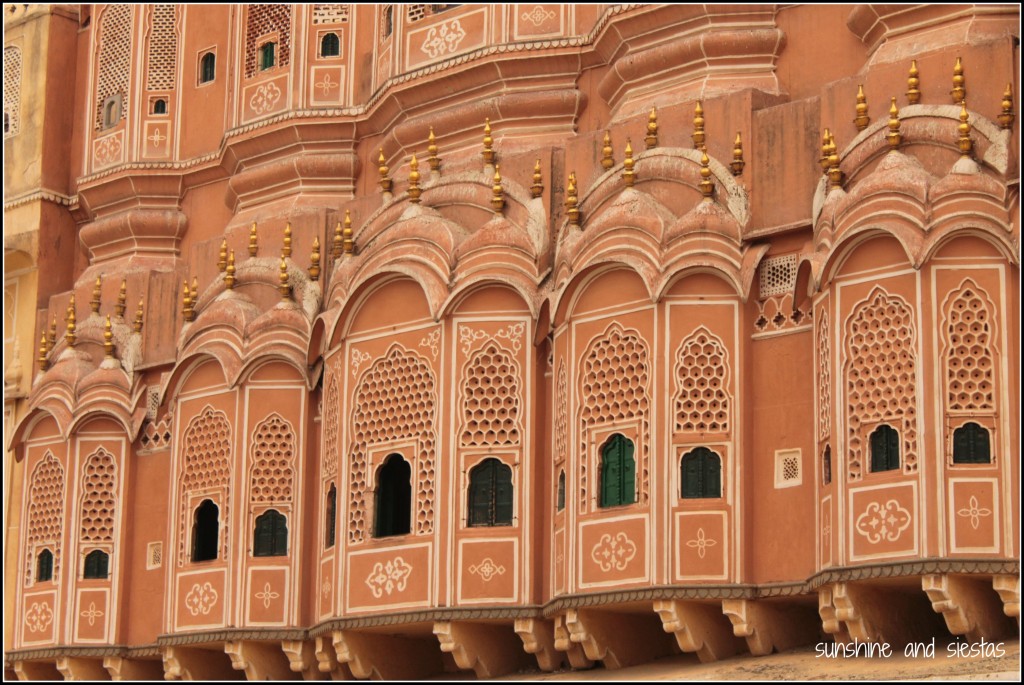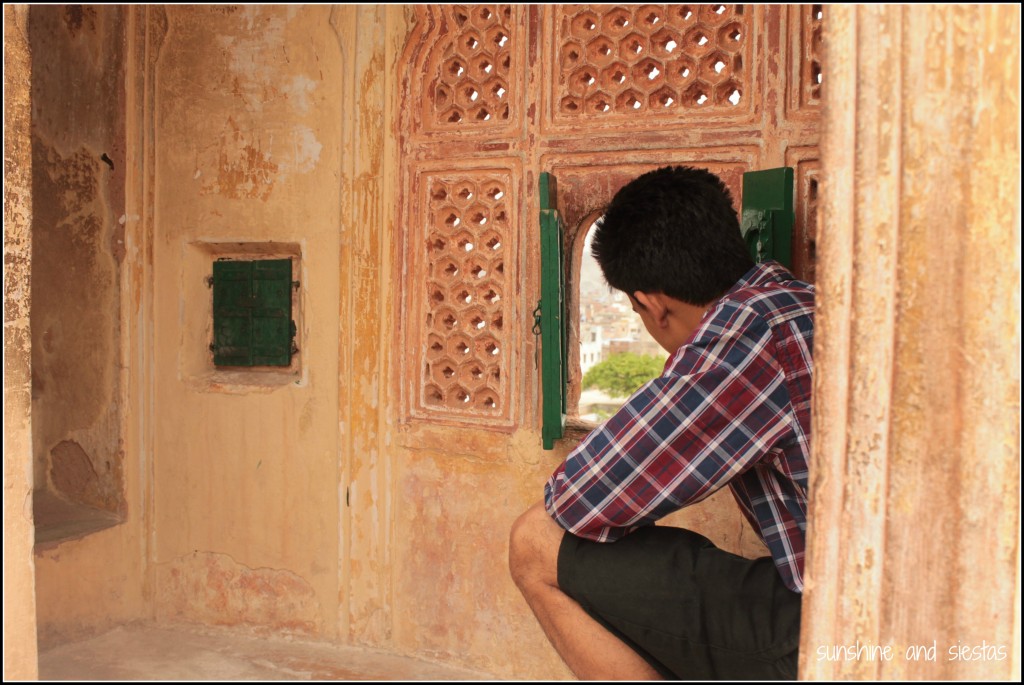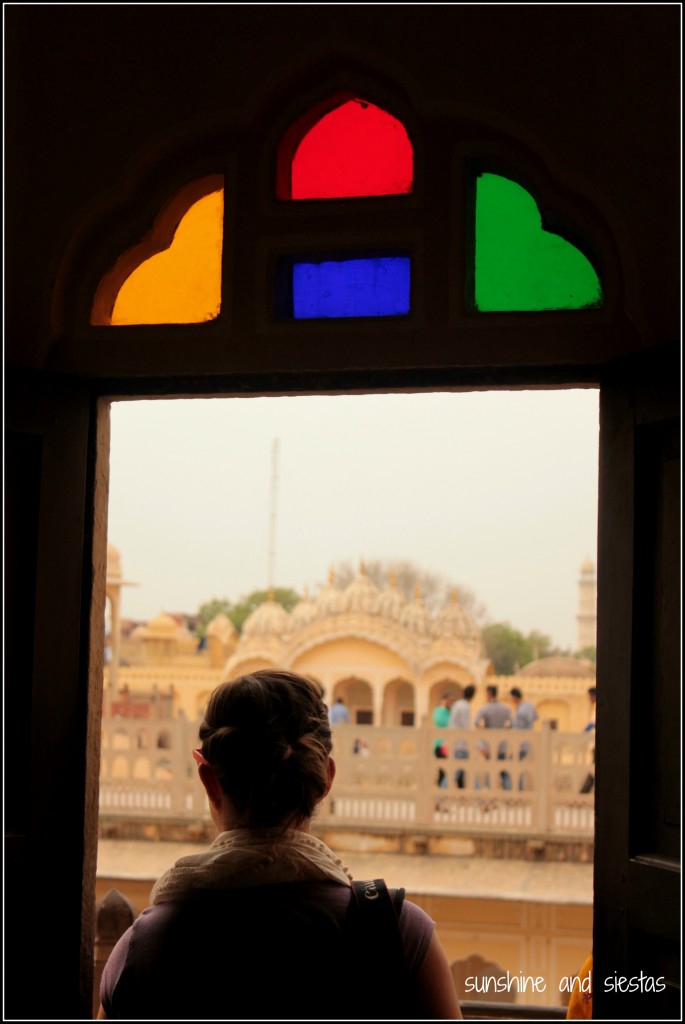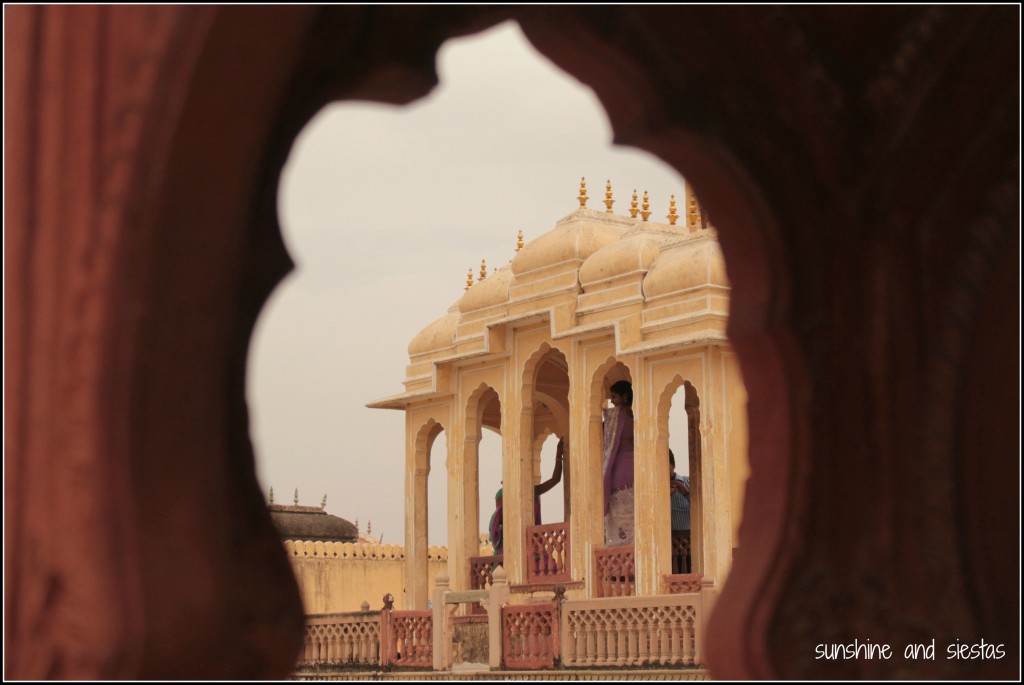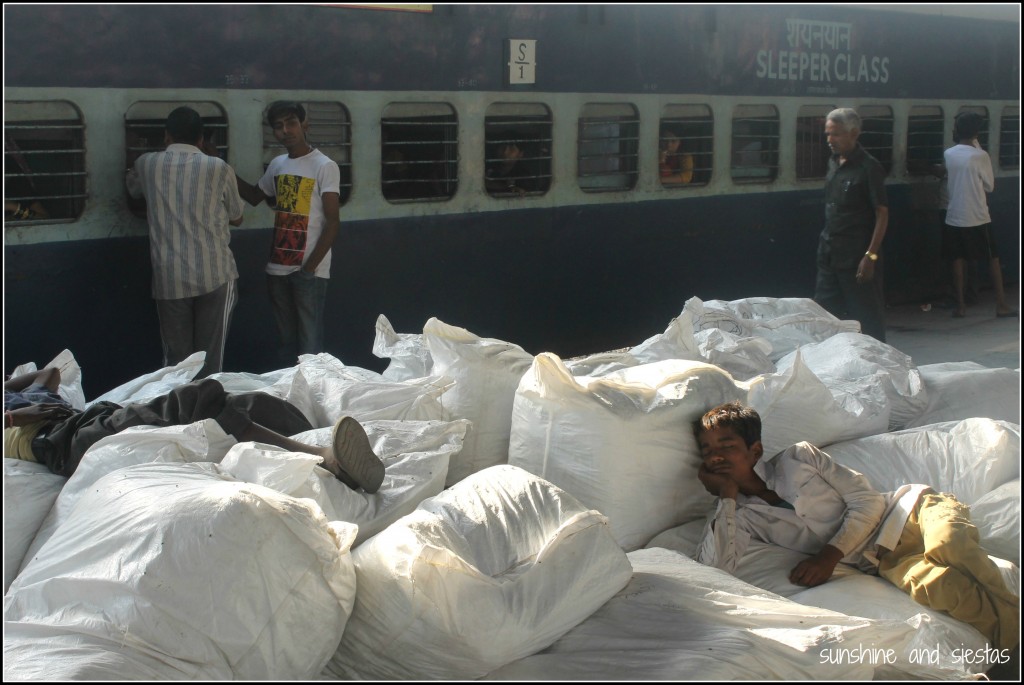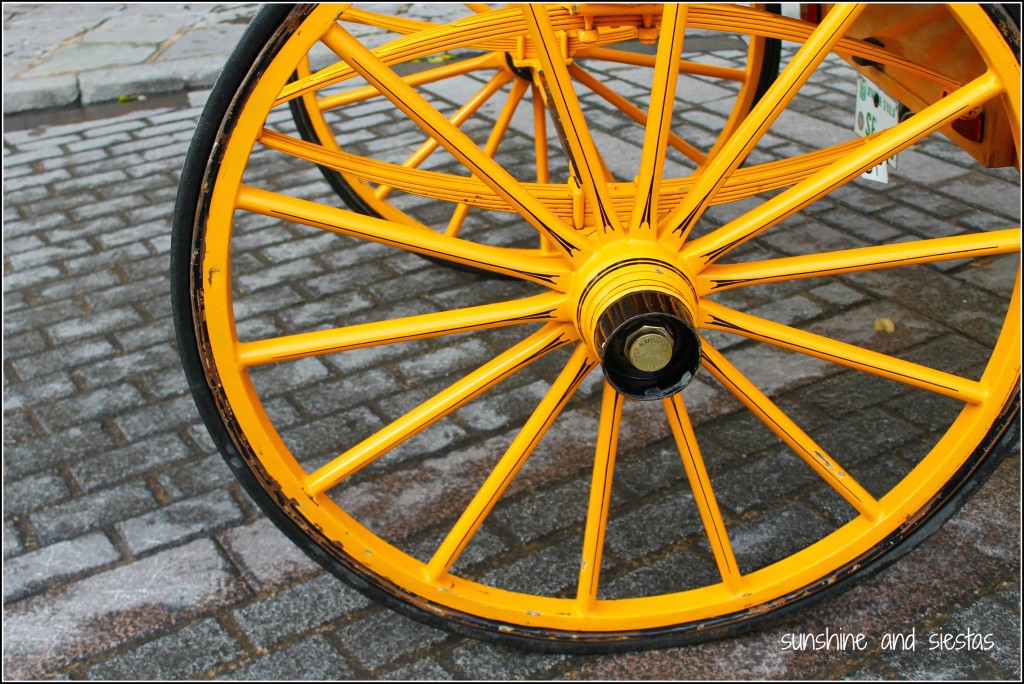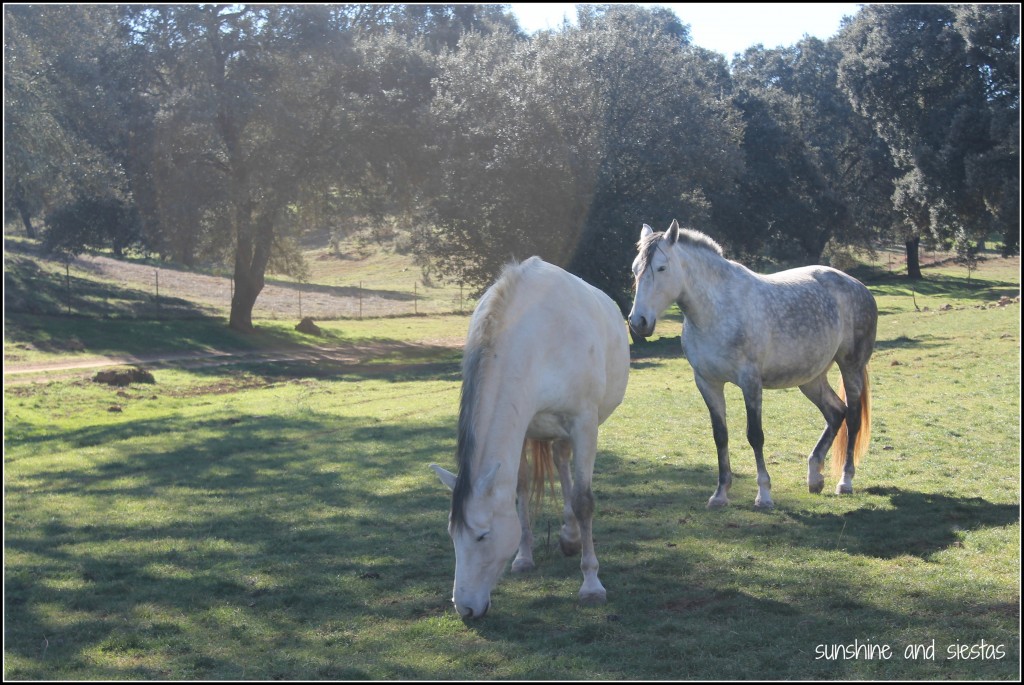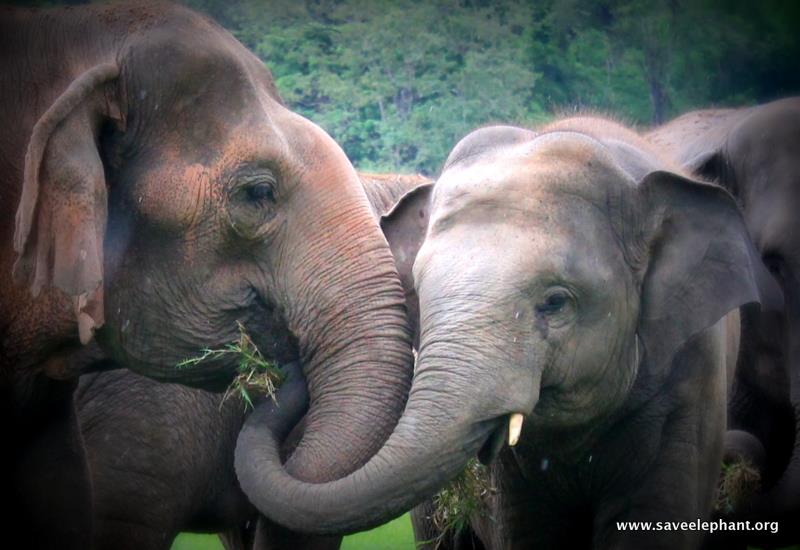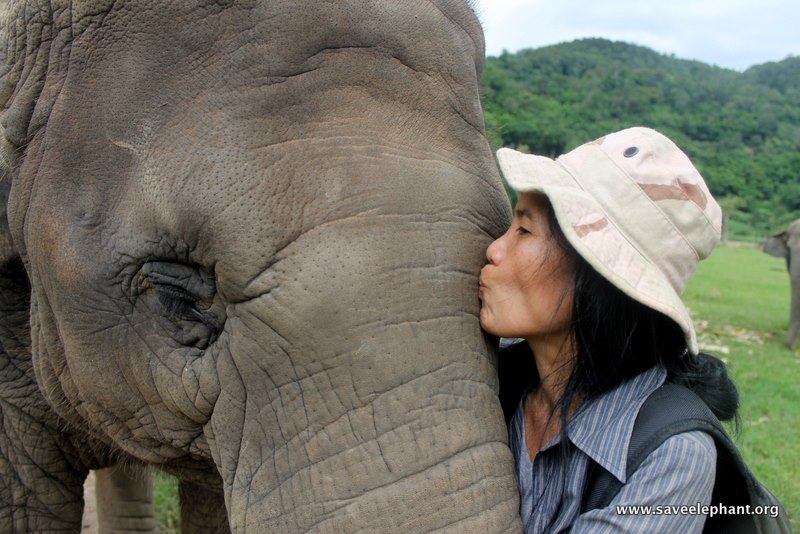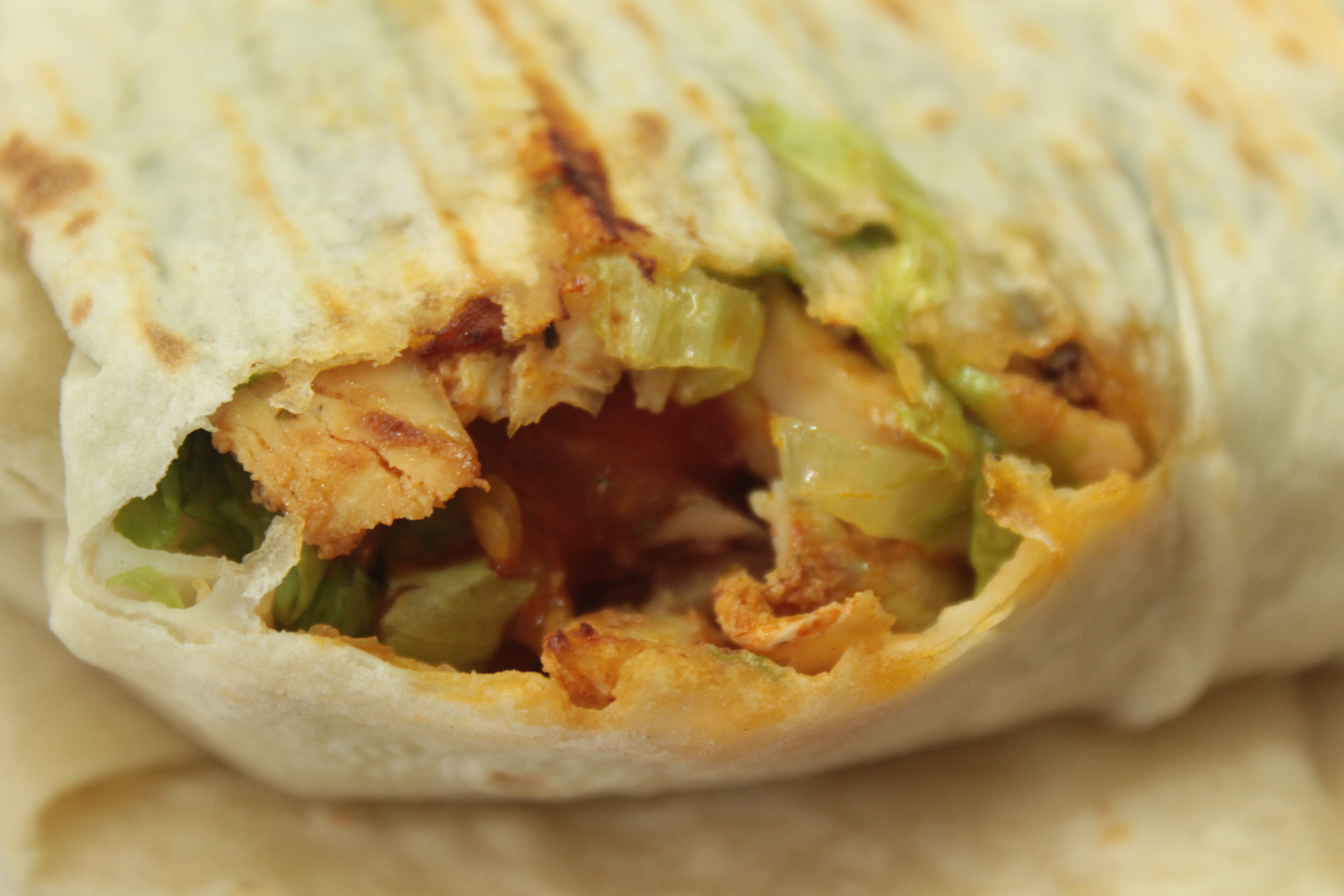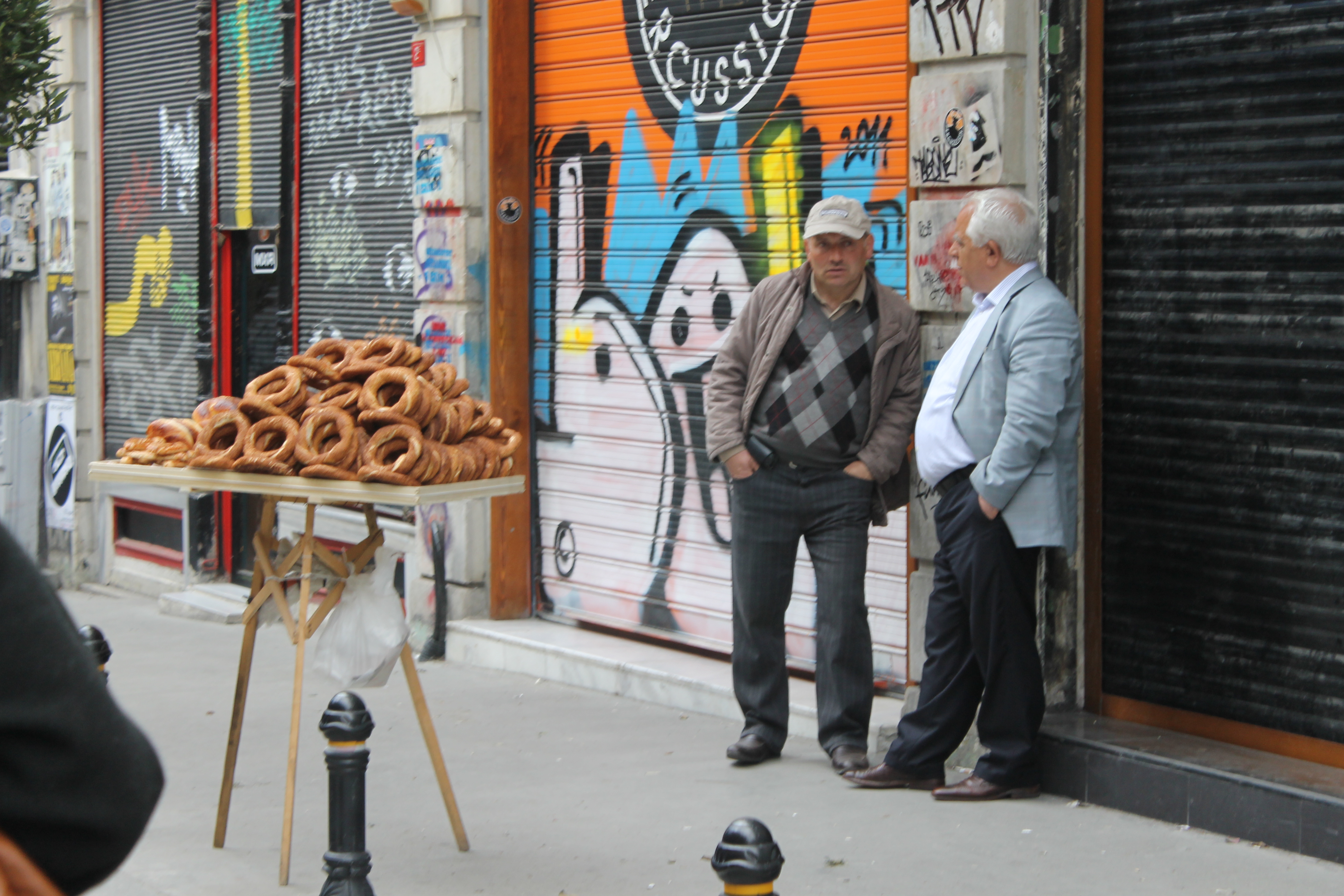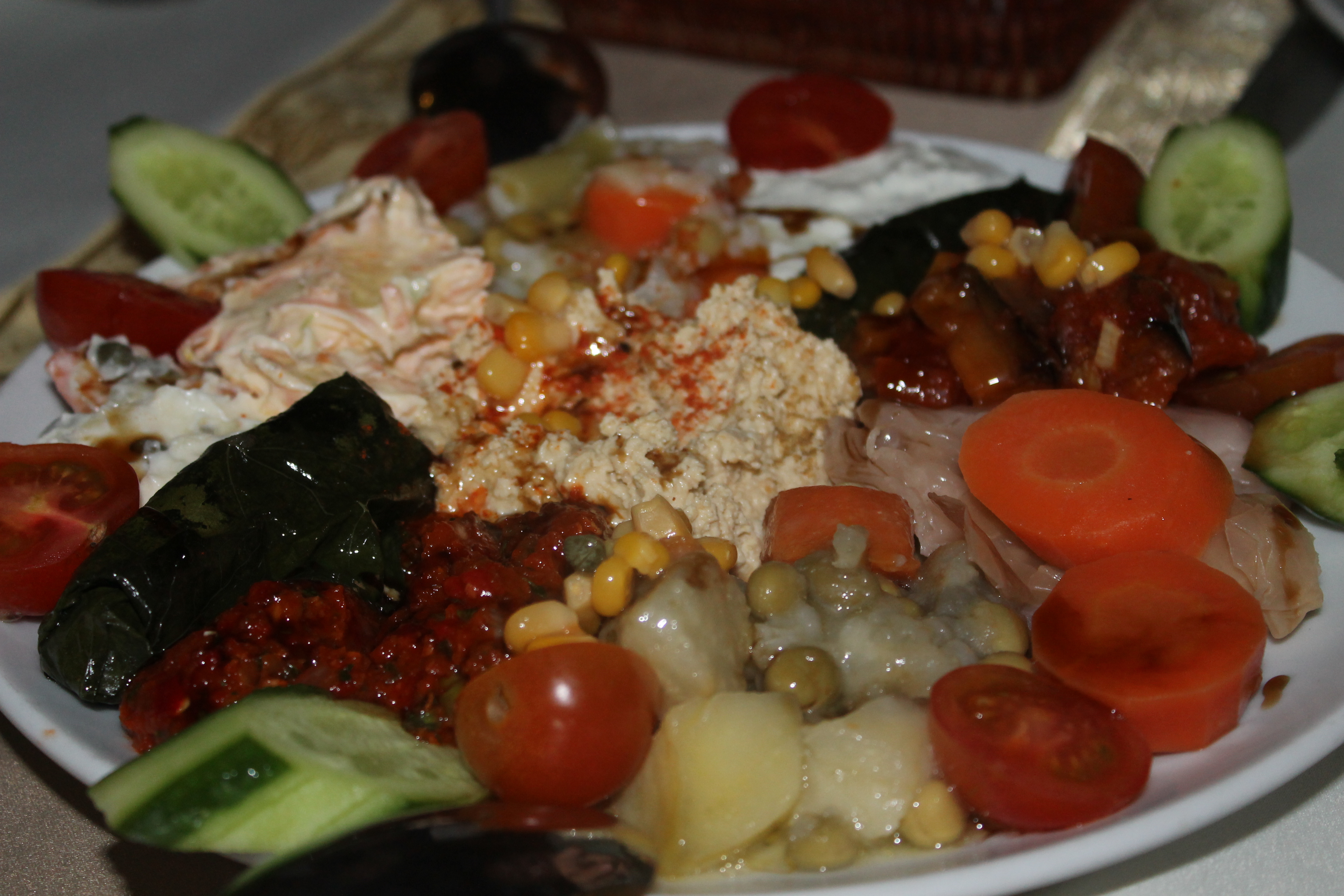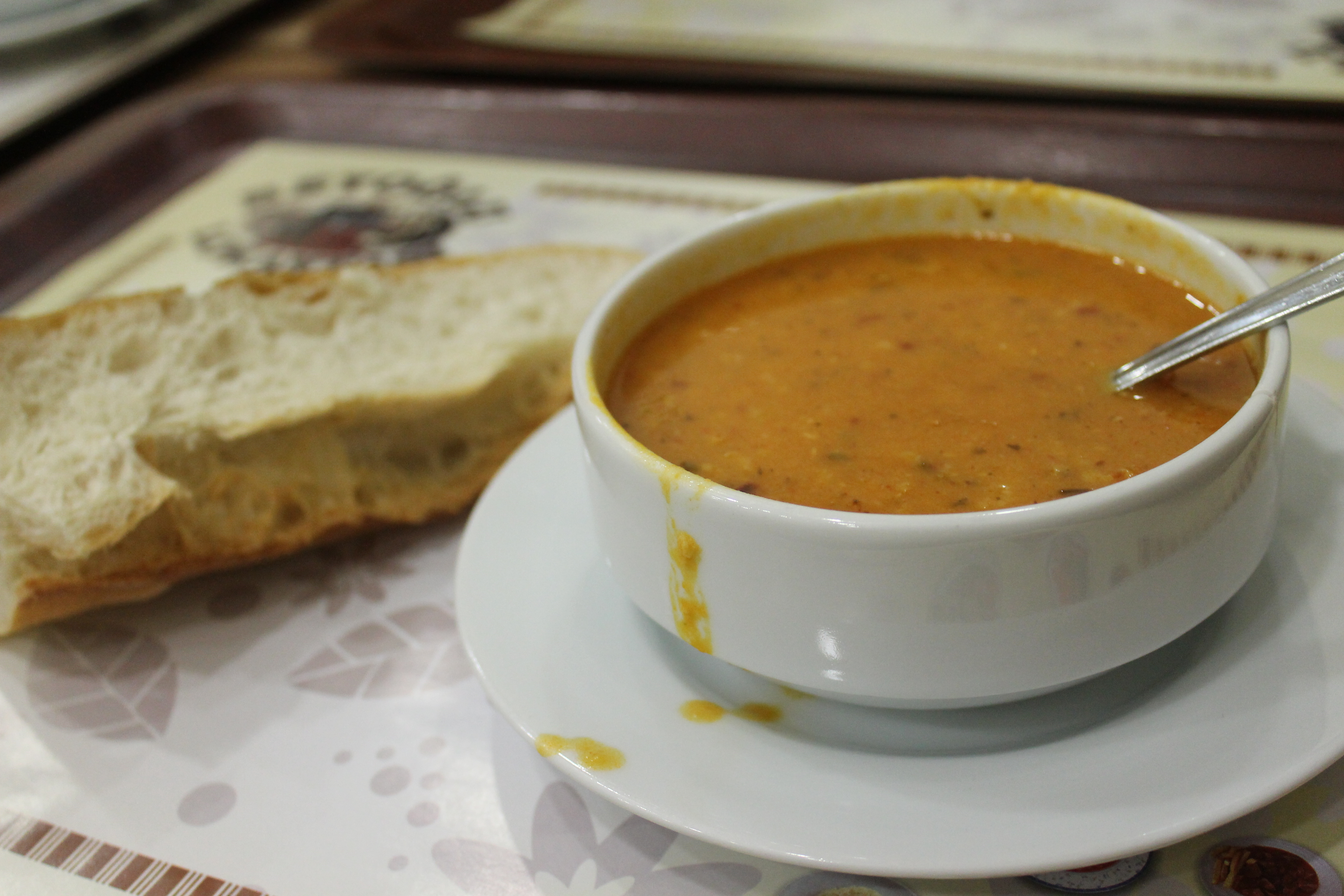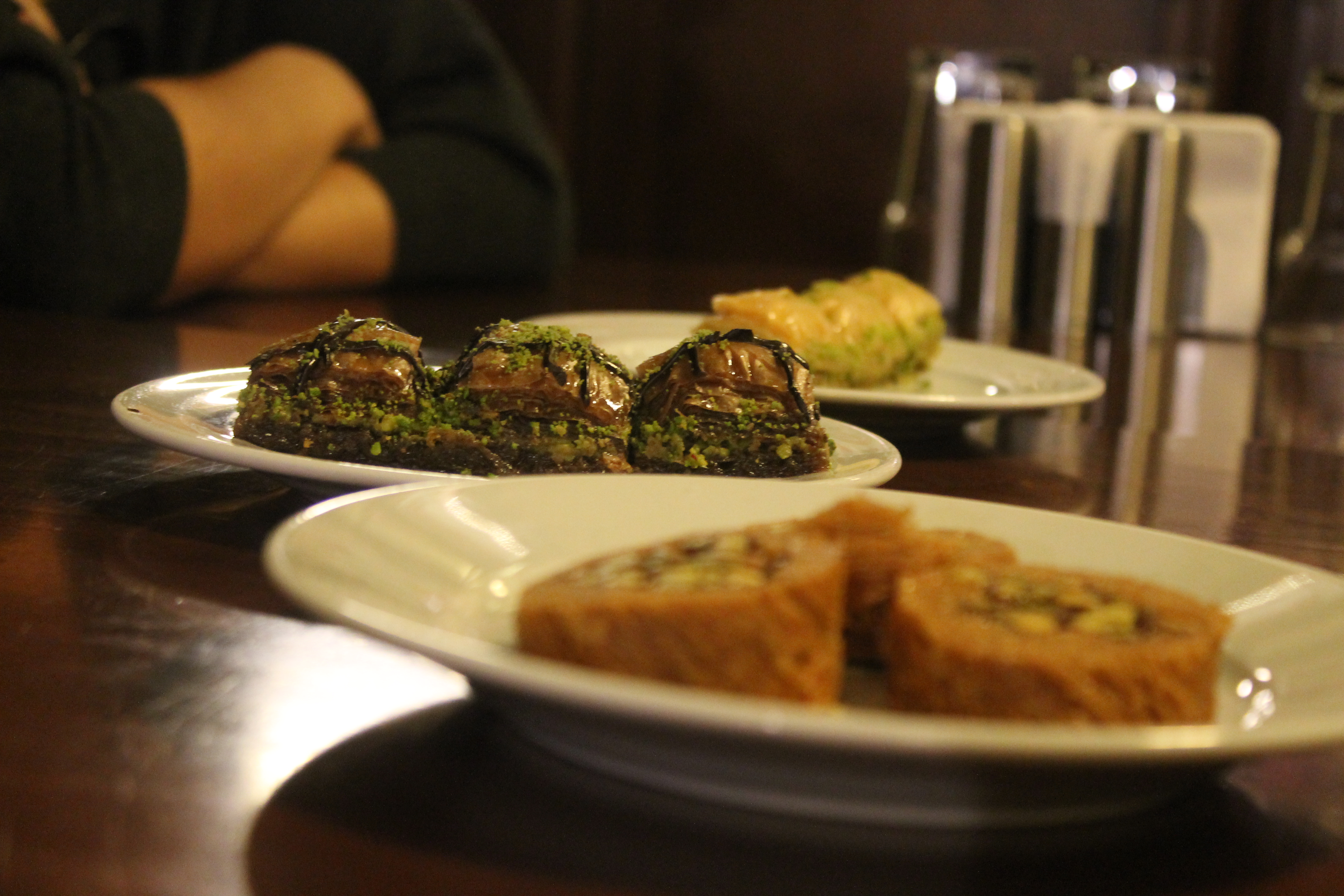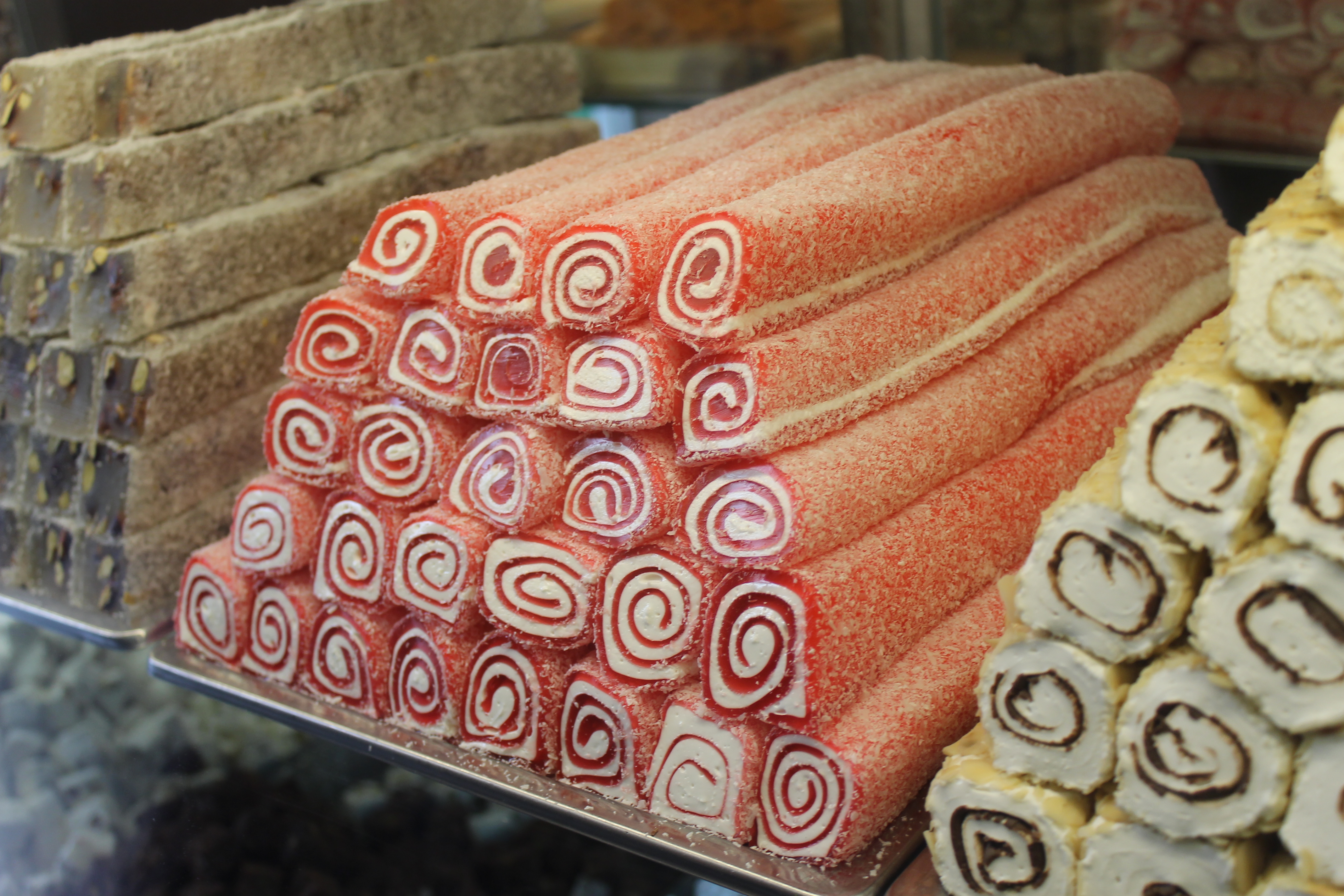From where we stood, halfway up the hill to the Monkey Temple, the waning light was turning ‘The Pink City’ a pearly, golden hue. The jagged skyline’s stack of buildings and telephone poles, a thousand candles, was like a fanciful birthday cake.
I scanned the horizon across Jaipur, noting the immense desert city that sat sprawled between mountains. We’d come because the city that had been painted the color of hospitality was rumored to be beautiful but gritty, busy but manageable. The Amer palace was the draw, but I had my eyes locked on the cake topper in the center of the cake – the Hawa Mahal.
Our tuk-tuk driver, Ali, warned us that the Hawa Palace was not really worth seeing. “It’s a house. A pink house. Better at Mughal market for the shopping.”
I’m sure you say that to all the ladies, Ali. Tu t’aime las filles, after all.
On our only full day in Jaipur, we did a whirlwind tour of the Fort, skipping the elephant ride as we climbed the hill on which the intricate palace sits before seeing the Janta Mantur observatory. While Ali tried to persuade us that it was better to skip the pink palace for a lassi drink and browsing the spice market, I couldn’t get over the pink lattice windows that peeked out above the city palace.
Like in many countries I’ve visited, the Hawa Mahal is essentially a fancy brothel, beautifully constructed living quarters that once included gilded doors and extravagant fountains against a facade that resembles a honeycomb. The five-story building is riddled with staircases, rooms, windows and lattice-work, allowing its inhabitants to see life on the streets below without actually being seen themselves.
Hayley and I saw a great deal of India from a tuk tuk, not quite on in a hit-the-pavement sort of way I had craved when we booked tickets. Even through the kindness of hotel owners, who helped us when we were scammed, through driving tuk tuk down deserted roads, to posing in pictures with sari-clad Indians in front of the Taj Mahal, I feel as though we barely scratched India’s expansive surface.
Like the women who once lived in the small bedrooms of the Palace of the Winds and could witness the trading and chaos, the wandering animals and the comforting hum of daily life in Jaipur, our India experience felt like theirs – someone not quite on the inside. I suddenly had the urge to skip Mumbai and stay in the Pink City, to consider India in the future. After five days, two train rides and countless interactions with strangers, I knew one trip to India would never be enough for me.
Ali was waiting for us at the Tripolia Bazaar, feet up on the narrow dashboard of his motorized tricycle. “So, very boring, yes?” he questioned as we climbed into the back and he sped off towards the spice market.
I somehow knew India had gotten under my skin in that very moment.
Have you ever wanted to learn more about a destination after you’d visited? Or do you see things and then mentally cross it off a bucket list?
